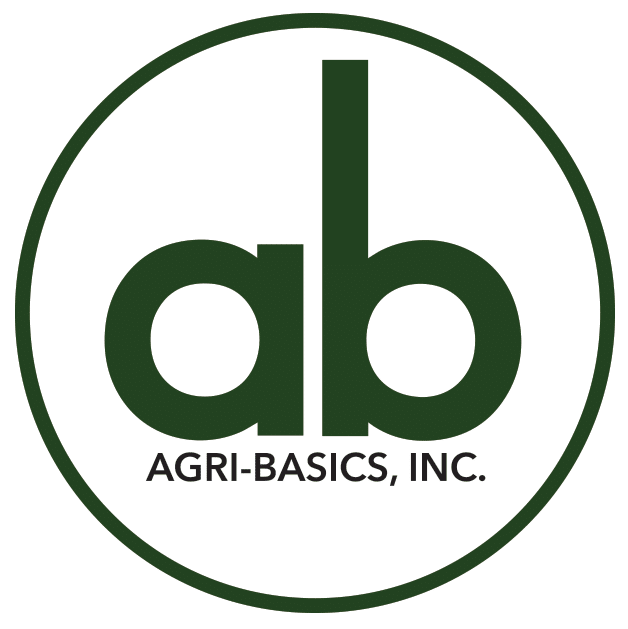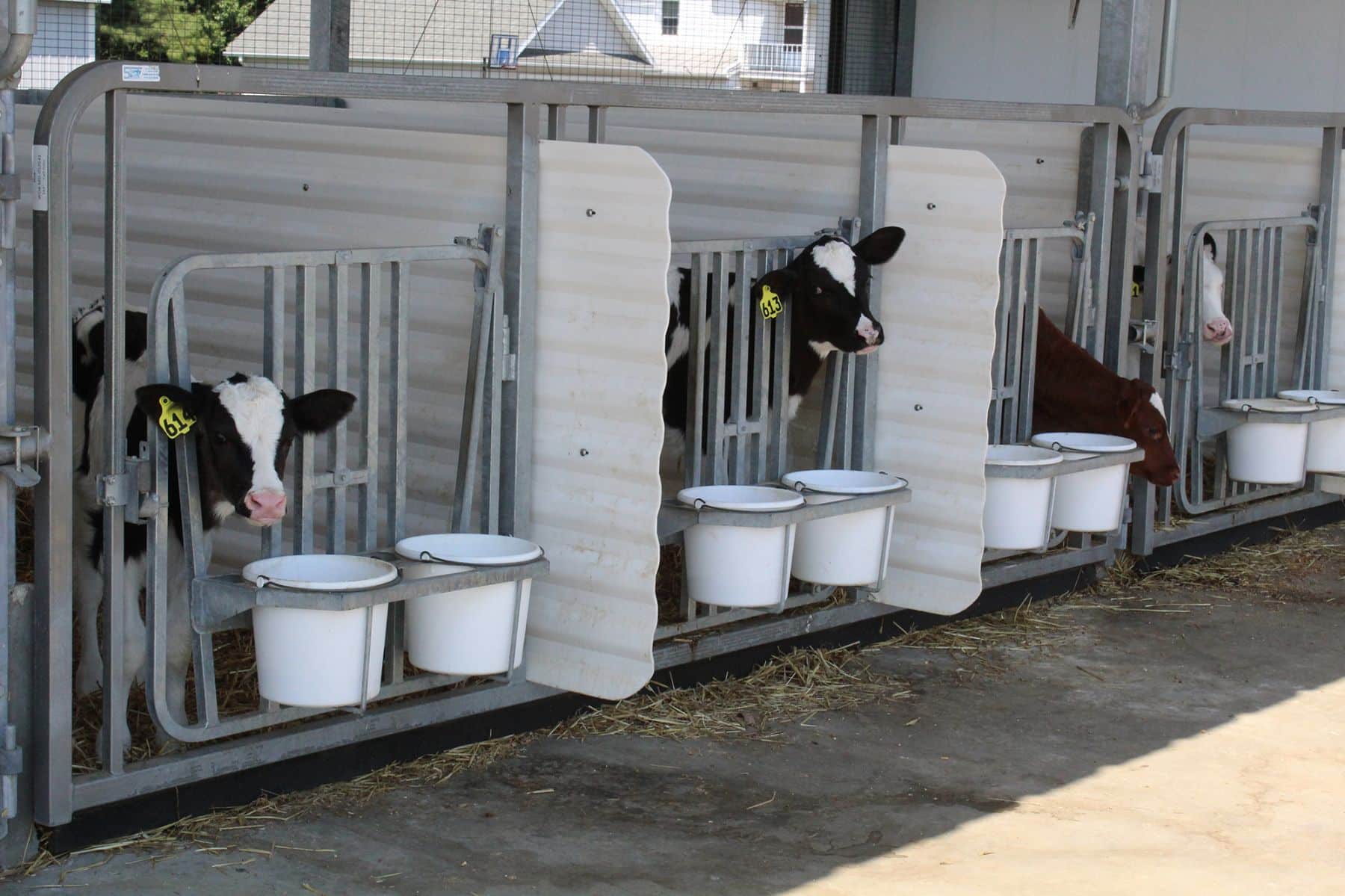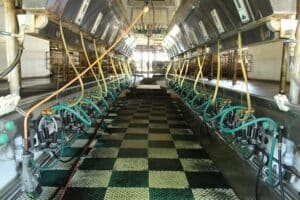Instead of thinking about calf formula feeding costs, focus on getting the biggest bang for your buck.
Dr. Robert Corbett, DVM
Known worldwide for his dairy health and nutrition consulting, Dr. Robert Corbett, DVM, was the keynote speaker at the Agri-Basics, Inc. Dairy Seminar last December.
He stressed the efficiencies to be gained feeding pre-weaned calves because “they are like hogs and chickens.” Pre-ruminant calves are single-stomach animals with the ability to very efficiently convert feed into growth.
“Look at what your cost is per pound of gain not your cost per day,” Corbett explained. Two good benchmarks to watch are dry matter intake at weaning and heifer size at breeding. The ideal weight for heifers at calving is 1350 to 1400 lbs. with wither height of 54.9 inches.
“Calves on whole milk or replacer fed at only 8 to 10% of bodyweight instead of 20% of bodyweight are gaining 0.5 to 1.0 lbs/day. Even at 1.3 lbs/day average daily gain, those heifers would not reach the proper breeding size until 18 months, which means they would be 27 to 28 months old at first calving. That extra time means real dollars to the dairy.
By getting more pounds of lean gain and frame during the pre-weaning period, the heifers are set up to consume fewer total pounds of feed on their way to finding their place in the milking string. Producers can save 30 to 50 cents per pound of gain just in animal value – never mind the higher value of cattle today and the fact that studies show an increase in first and second lactation milk yield when pre-weaning growth rates are rapid.
More important than mortality rates, he said, is the condition of those calves at birth. Are calves being born in good condition to set the stage for raising them profitably?
Corbett showed slides of newborn calves born too thin and lacking sufficient muscle definition due to insufficient dry cow nutrition. Without good body condition at birth, the calf will devote a major part of her early nutrition to building the fat and protein reserves she should already have.
Rob Costello of Milk Specialties Global also stressed the importance of newborn calf condition, noting the “brown fat” as a special fat in newborn calves that converts directly to heat. “Cold weather triggers norepinephrine release, which then triggers the calf’s ability to use this fat,” he said.
With the winter our dairy farms have just endured, this tip should be remembered: “The nutrition of the dam has a big effect on the ability of the calf to have this fat to burn in its first day of life.”
Once that calf is on the ground, Corbett said feeding adequate high quality colostrum is essential not just for the immunities, but also to transmit many signals for life. Much is being learned these days about the bovine endocrine system and how colostrum transmits information that coincides with the genetic potential of the calf in relation to growth, reproduction, and mammary development.
While suckling the dam is not recommended, Corbett said it is crucial to milk that animal immediately and to try to match that colostrum to her calf, wherever possible.
In the milk replacer program, Corbett advised feeding more to compensate for the effects of weather stress in the calf’s environment. This goes for the extra energy the calf needs to maintain herself in cold weather as well as the extra energy she utilizes driving heat from her body in hot weather.
He explained that producers can immediately improve the nutritional intake of the farm’s calves by keeping an eye on the temperature and adjust calf intakes accordingly.
The ideal ambient temperature for the calf is 68 degrees F. That is the baseline where one pound of traditional 20/20 milk replacer will produce a half pound of gain. Corbett stressed much better feed conversions are possible when calves are fed more aggressive diets to achieve more rapid growth during this highly efficient pre-ruminant phase of life.
Corbett suggested feeding milk replacers that are higher in energy and protein as well as feeding a higher percentage of solids. However, he also stressed the need to avoid problems with osmolarity by keeping the solids ratio at or below 15% solids to liquid.
According to Costello, options for increasing energy intake in calves include 1) increase the volume of milk replacer fed, 2) use a higher fat milk replacer, and 3) increase the concentration.
according to recommended guidelines. This can also be achieved by adding an energy pack or protein encapsulated fat.
“Everything you do is to encourage a rate of gain on those calves that makes heifer raising a profit-center, not a cost, on your operation,” said Corbett.
Costello also talked about alternative proteins. Today, that includes combinations of wheat and plasma proteins as the human nutrition market competes for whey protein.
Corbett noted that feeding dairy calves should not only maximize rapid growth during the efficient pre-weaning phase, but also mimic what is biologically normal. For example, if left on the dam, a 100-lb calf would, among other things, nurse 6 to 10 times a day and consume 2 to 3 gallons of milk per day.
Since 20/20 milk replacer is 20% protein and 20% fat, it is impossible to meet the nutritional requirements of milk-fed calves with this product at the suggested feeding rate, said Corbett.
He also noted that when accelerated growth formulas are fed, labor and medicine costs are decreased, age at first calving declines, and the program does not have to be constantly altered for environmental conditions.
While capitalizing on efficient growth in the pre-ruminant calf, it’s also important to make sure the rumen is sufficiently developed to ferment dry feeds efficiently enough to satisfy the nutrient requirement of the weaned calf, Corbett related.
It has been well proven that feeding high quality starter grains promotes more rapid and high quality rumen development compared with reliance on hay or forage.
Starter grains are a bridge from pre-ruminant to ruminant, but very young calves do not immediately get much energy from starter intake, so it must be accounted for carefully when calf nutrition needs are highest.
As starter-grain intakes increase, and calves are seen to be continuing in their weight gain, then their consumption of milk replacer can be held steady to then economically maximize that early growth as the calf transitions from a single-stomach to a ruminant animal.
While Corbett is not a fan of early weaning, he is a fan of setting farm-specific goals to maximize the growth potential of the calves during their pre-weaning period and to get them through the transition to a ruminant animal.
Talk to your AB consultant about nutritional strategies to get the biggest bang for your buck in calf growth on your farm.




